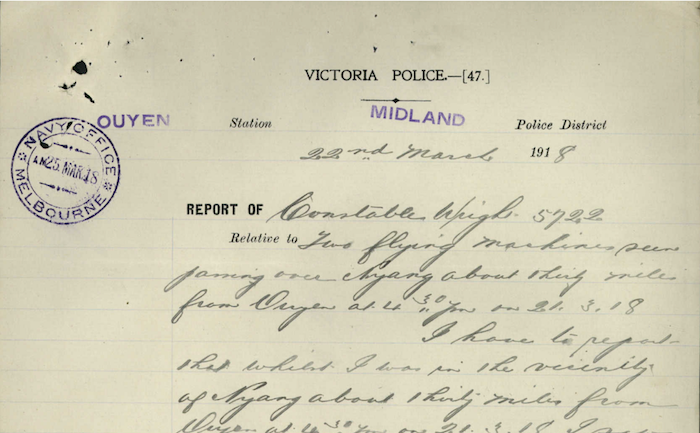Friday, 19 April 1918
NAA: MP1049/1, 1918/066, page 183 is a report from Constable G. T. Moyle of the Hamilton police station, in the Western District of Victoria. It concerns ‘an aeroplane’ seen near Macarthur in the early hours of 11 April 1918 by John Sutton, a drover. Sutton had told several people in Hamilton of his strange encounter, […]








